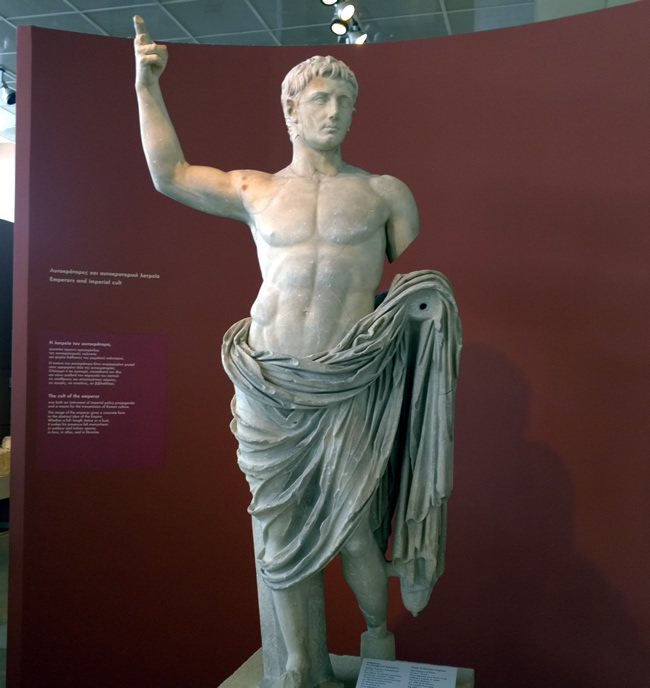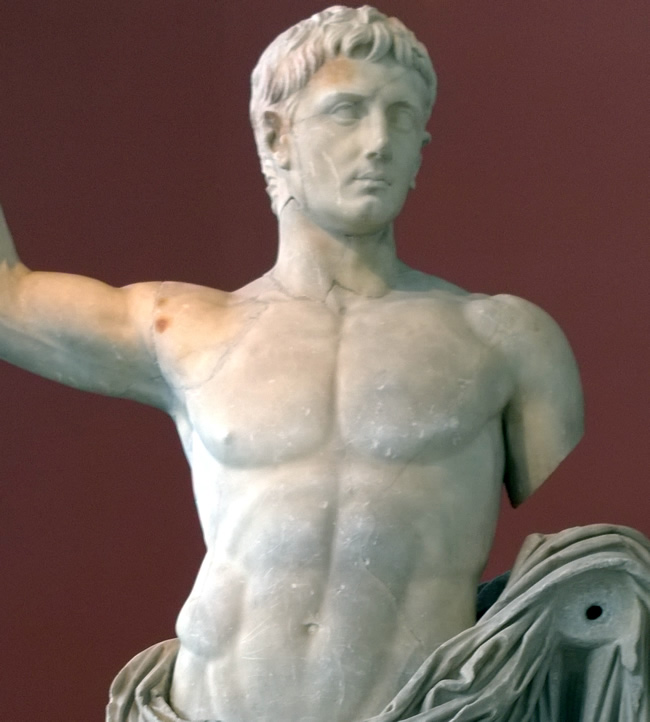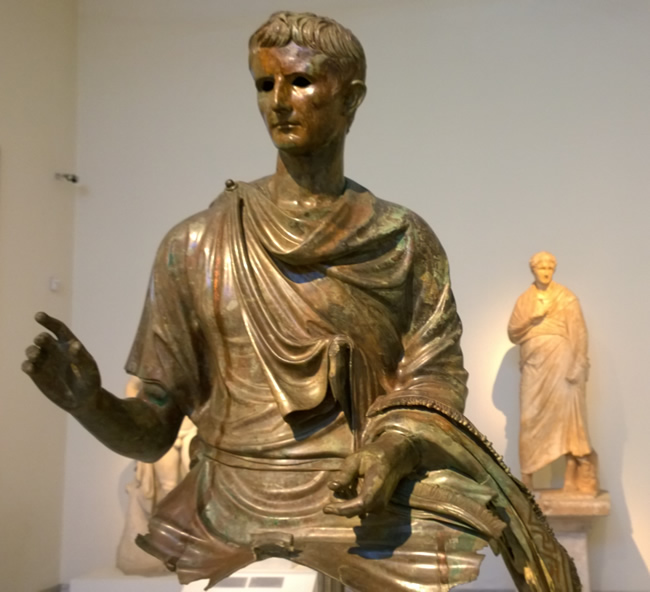I was fortunate to come across two strikingly different depictions of Roman Emperor Augustus (r. 27 BC – 19 AD) while in Greece last year. These depictions, one made during his rule and the other after his rule, give us a clue as to how Augustus wanted to be portrayed and how people portrayed him after his death.
Here he is in Archaeological Museum of Thessaloniki in all his marble glory. We do not have an exact date or author, but the consensus is that it was constructed in a Thessaloniki workshop during the reign of Emperor Tiberius (14-37 AD).

It is remarkable how perfect and beautiful the sculptor made the face and body. The emperor could easily pass as an athlete or model in our day.

At the National Archaeological Museum of Athens, I encountered a much different Augustus. Instead of marble, we have bronze. Sadly, it is incomplete, missing the horse he was piously riding. This Augustus is older and takes on the pose of a wise ruler. Found in the Aegean Sea, this dates roughly to 12-10 BC, during Augustus’s reign and roughly 25 years before his death.

This now begs the question on how Augustus wanted Romans to remember him. If while he was still alive and ruling, he preferred the pose of a mature, wise ruler, then perhaps the athletic, young pose is far from what he wanted. However, provinces preferred the young, heroic Augustus, attesting to the cult-like status he had reached by the time of his death.
